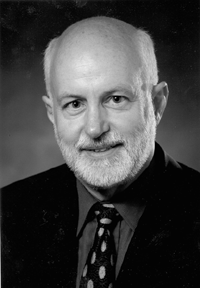Message
from the Dean for Computing and Information Science
Computing and Information Science (CIS) continues to take shape as more faculty members are hired and new programs are created in the Faculty of CIS. All of these developments continue to be joint efforts of the group of eighteen faculty founders, the CIS–funded professors, and the Department of Computer Science (CS).
This year the focus was again on staffing programs created over the past two years: Information Science, Computational Biology, Digital Arts and Graphics (DA&G), and the joint e-business effort with the Johnson Graduate School of Management (JGSM). In the area of e-business we are extremely pleased to have attracted Professor Daniel Huttenlocher back from his extended leave as the occupant of a newly endowed joint CIS–JGSM chair, the John P. and Rilla Neafsey Professorship of Computing and Information Science and Business. Dan will join the Faculty of Computing and Information Science (CIS) in August and teach in both units. As the chair of the Computing and Information Science Task Force that helped bring the Faculty of CIS into being, he will continue to provide leadership within that body.
The minor in Information Science was approved in six of the seven undergraduate colleges, thanks to the efforts of the working group in this area, especially Bill Arms and Geri Gay, and to the considerable efforts of the CS chair, Charles Van Loan. By next year this minor may be supported in all of Cornell’s undergraduate colleges.
The university has provided 10,000 square feet of new space for Information Science at 301 College Avenue, the site of the former Triangle Bookstore. Extensive renovations are creating a research facility for Information Science that will include a usability laboratory. Pat Musa, CIS Executive Officer, coordinated a design-and-planning team that worked all year to realize this vision.
The Information Science working group created a hiring committee led by Professor Geri Gay and consisting of Professors Bill Arms, Shimon Edelman, Jon Kleinberg, Phoebe Sengers, and me. Our job was to help the Department of Communication hire in this area. The result was the appointment of Jeffrey Hancock as a new assistant professor, who will help teach in the Information Science program. He will join Professors Geri Gay, a CIS founder and communication department faculty member, and newly hired Professor Joseph Walter, an associate professor of communication. These three faculty members bring considerable experience in the area of human–computer interaction (HCI), a key component of the Information Science program.
We also worked this year with the School of Operations Research and Industrial Engineering to recruit in the area of statistical data mining and machine learning. We expect the search to continue next year.
A second group of CIS faculty members, including David Mermin, Fred B. Schneider, Jon Kleinberg, and me, helped the Department of Science and Technology Studies recruit Professor Tarleton Gillespie. He is a new CIS–funded faculty member from San Diego, with a Ph.D. in communication, who studies legal issues in computing. His doctoral dissertation includes a case study of the Digital Millennium Copyright Act.
This year CIS made decisive moves in the area of digital arts and graphics. CS hired Professors Kavita Bala and Steve Marschner. The founders group was very active in helping attract these candidates and move DA&G along.
The Computational Biology working group has been active in implementing the tri-institutional effort—of Cornell and its Weill Medical College; the Memorial Sloan–Kettering Cancer Center; and Rockefeller University—to attract new faculty members and research staff in computational biology. The Computational Biology Service Unit, led by Professor Ron Elber, now functions in the Cornell Theory Center. Professor Golan Yona of CS and David Shalloway of the Department of Molecular Biology and Genetics are two CIS professors who are helping the New York State College of Agriculture and Life Sciences form a new Department of Biological Statistics and Computational Biology. They are working with the Genomics Task Force and CIS to hire faculty and create a tri-institutional graduate program in computational biology.
Our two distinguished lecturers this year were both associated with biology. In the fall Gene Myers of Celera lectured on “Whole Genome Assembly: Tactical and Strategic Implications”, and in the spring, Jeff Hawkins, founder of Palm and now CEO of Handspring, lectured on “Synapses to Silicon: How Neuroscience Will Impact the Next Fifty Years of Computing”. These were extremely engaging lectures that have brought return visits and plans for a conference organized by Shimon Edelman on computational neurobiology.